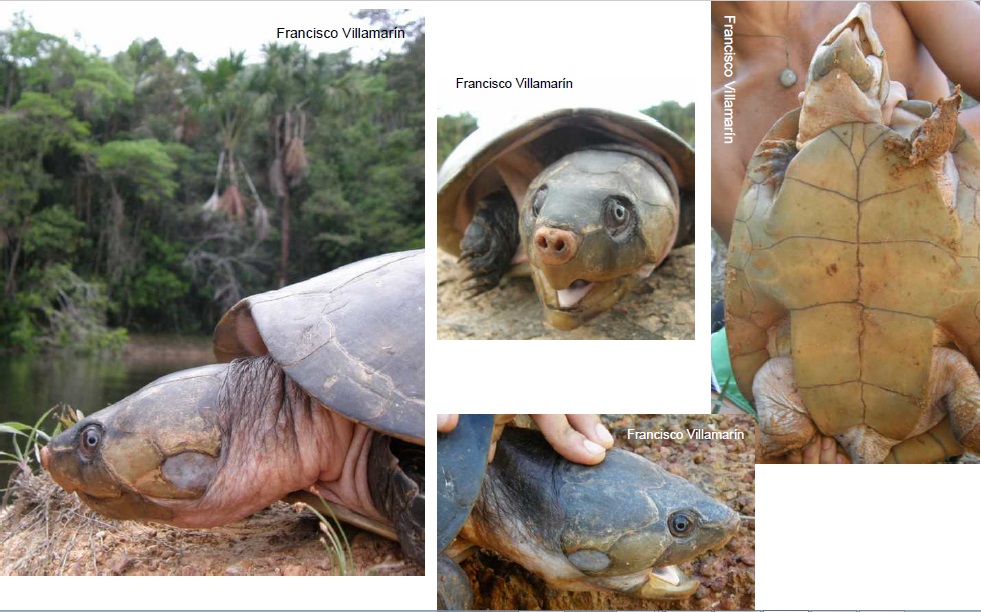 Português
Português English
English
Languages
Peltocephalus dumeriliana

Family: Podocnemididae
Big-headed Sideneck Turtle
Scientific name: Peltocephalus dumerilianus. The species is monotypic within the genus Peltocephalus.
Common name: Brazil - cabeçudo (females and males).
South America: Cabezon (Comlombia and Venezuela).
Size / weight: the length of the adult carapace can measure up to 52 cm in males and up to 47 cm in females, adults can weigh between 8 and 15 kg.
Species characteristics: it is a large turtle and, in contrast to most other kinds of turtles and species of its same family. Males are larger than females. This species has a lot of strength in its jaws and its bite is very strong.
Habitat: widely distributed in the Amazon Basin, and abundant in the black water rivers of the Rio Negro.
Diet: despite having a very sharp "beak" and very strong jaws which might suggest that it is a predator, it is seeds and fruits that are primarily found in their stomach contents.
Breeding: nest anywhere in dry sand in "igapó" forests. Their nests are made mainly inside the flooded forest, on land besides the roots of fallen trees. However, females also build nests on the waters edge. Spawning varies from July to November depending on location. The females lay between 10 and 25 eggs per nest.
Adults are the most exploited because their nests are so well camouflaged. It is not consumed because it is the preferred species, but because populations of other species of turtles have been decimated.

